Low Blue Light Content
Methode 1&2
11/14/2016
�
• Background of Blue Light
Being useful most of times, light / radiation also has its hidden dangers. A very
well-known example is the “sun-burn”.
Depending on the “light-colour” typically different hazard levels can be
associated. While in range from red to infrared the danger to the human body is
comparably small, the same energy levels in the blue and Ultraviolet light range
can cause harm to skin or eye.
Even when not being able to cause physical harm to eye or skin, light colours
are able to impact our psyche as can be seen on the day and night rhythm
(circadian rhythm).
�
• Blue Light in Display Products
Why a Low Blue Light certification mark?
Example: Behavior of a software for Android
Mobile Phones claiming to reduce blue in %
80% 70% 60% 50% 40% 30% 20% 0%
0%
20%
40%
60%
80%
100%
0%
20%
40%
60%
80%
100%
250
200
150
100
50
0
]
²
m
/
d
c
[
e
c
n
a
n
m
u
L
i
claimed blue decrease
measured Luminance
80% 70% 60% 50% 40% 30% 20% 0%
10000
8000
6000
4000
2000
0
]
K
[
e
r
u
t
a
r
e
p
m
e
T
r
u
o
o
C
l
claimed blue decrease
CCT NIST
�
• Requirements
Prerequisite-safety
The product must be safe under foreseeable use and misuse conditions
(e.g. electrically or mechanically)
Ideally a TÜV Rheinland GS-mark or a local mark of a NCB
�
• Requirements
Low Blue light explanation
In the user-manual the meaning of low blue light content has to be
explained and they correctness of this claim is confirmed
Easy access
The Low Blue light mode of a product has to be easily accessible. This
can be achieved either by default mode or operation of a single button
without entering further menus
Photo-biological Safety
The product must meet exempt group limits as laid down in EN 62471
No UV-Content
In the wavelength range from below 380nm, the product shall not emit
radiation (neither UVA, UVB nor UVC)
�
• Requirements
Ratio Blue light to luminance level
In a band with a bandwidth of +-20nm next
to the blue peak a maximum of 20% of
power of the whole spectrum are allowed
to be emitted.
Ratio Blue to Green Ratio
The Blue peak is not allowed to be more
than double as high as the highest peak in
other color range.
< 50%
Failed Example
452nm
Blue Peak:
542nm
Not Blue Peak:
23.1%
Flux 20nm Band:
Flux Ratio Blue to not Blue: 40.0%
�
Method 2
Due to technological changes a revision of the 2PfG Low Blue Light content become
necessary.
The following pages describe the added method 2
7
11/14/2016
Martin Eichenseder
�
Reason for LBL method 2
Studies (see reference [1] and [2]) on rats
have shown that blue light in a so called toxic
wavelength range of 415nm to 455nm
generated the greatest phototoxic risk to
retinal pigment epithelium cells [1].
Photoreceptor cell apoptosis is seen early
after the retina is damaged by blue light …
provides a key to disclosing the basis of
photoreceptor dell death in photic injury by
blue light and opens the possibility of
intervention in its process [2].
8
11/14/2016
Martin Eichenseder
�
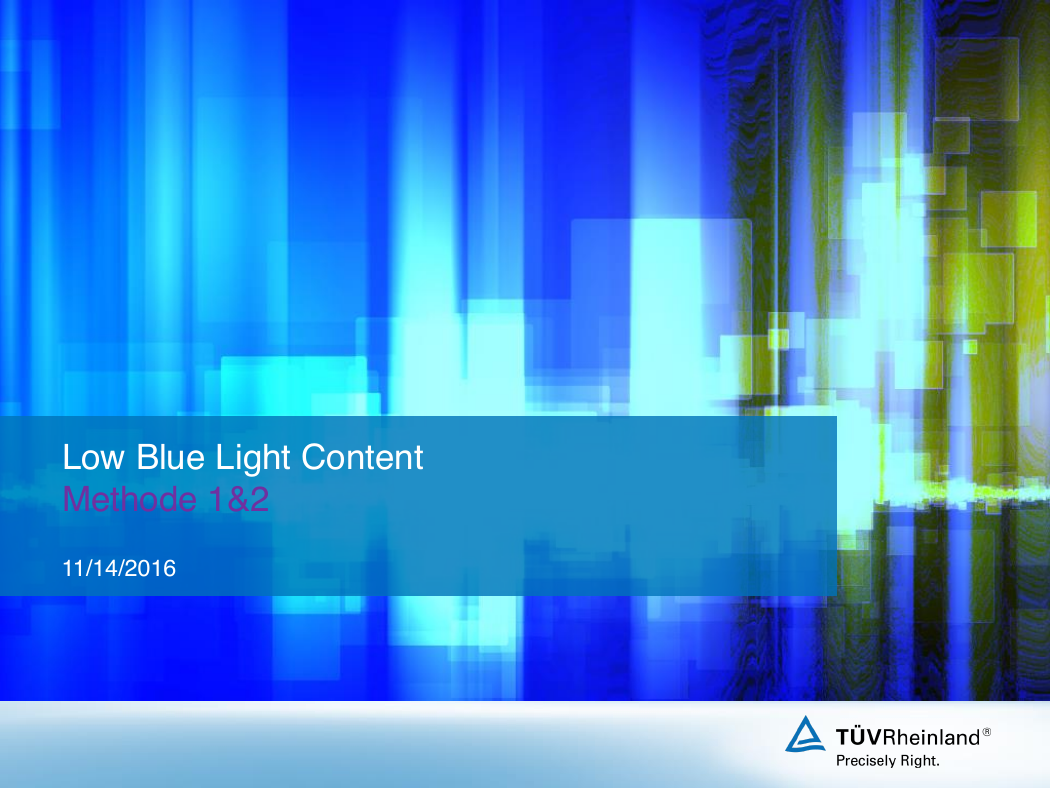
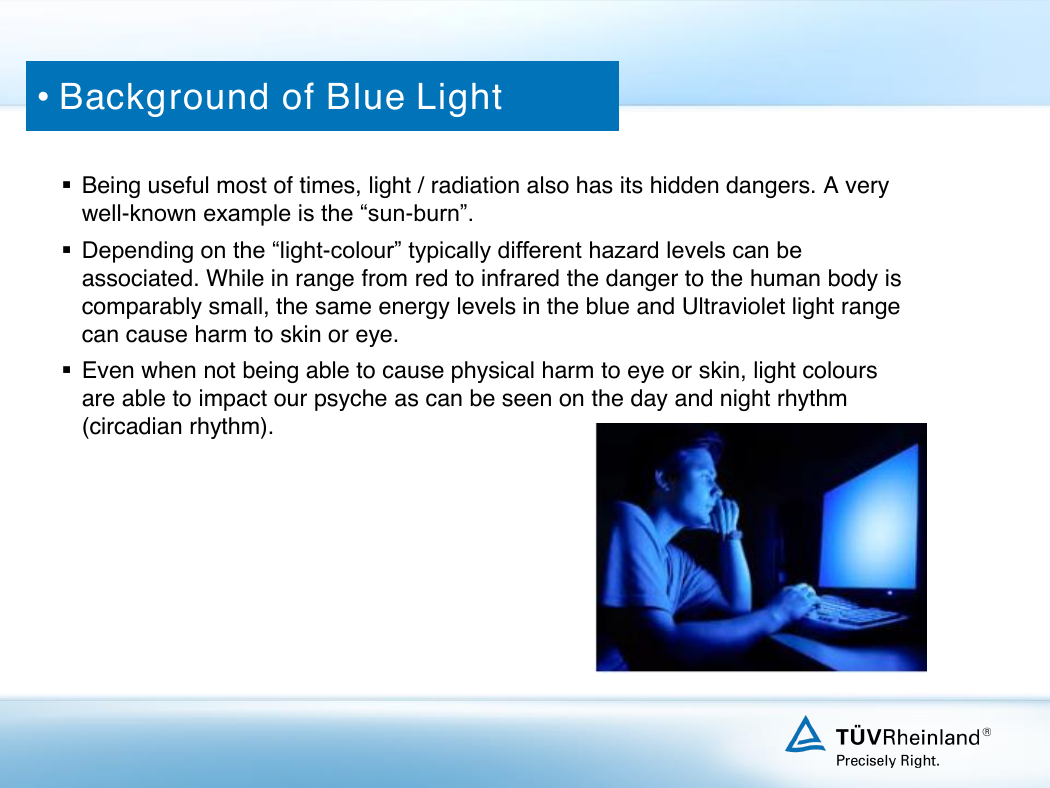
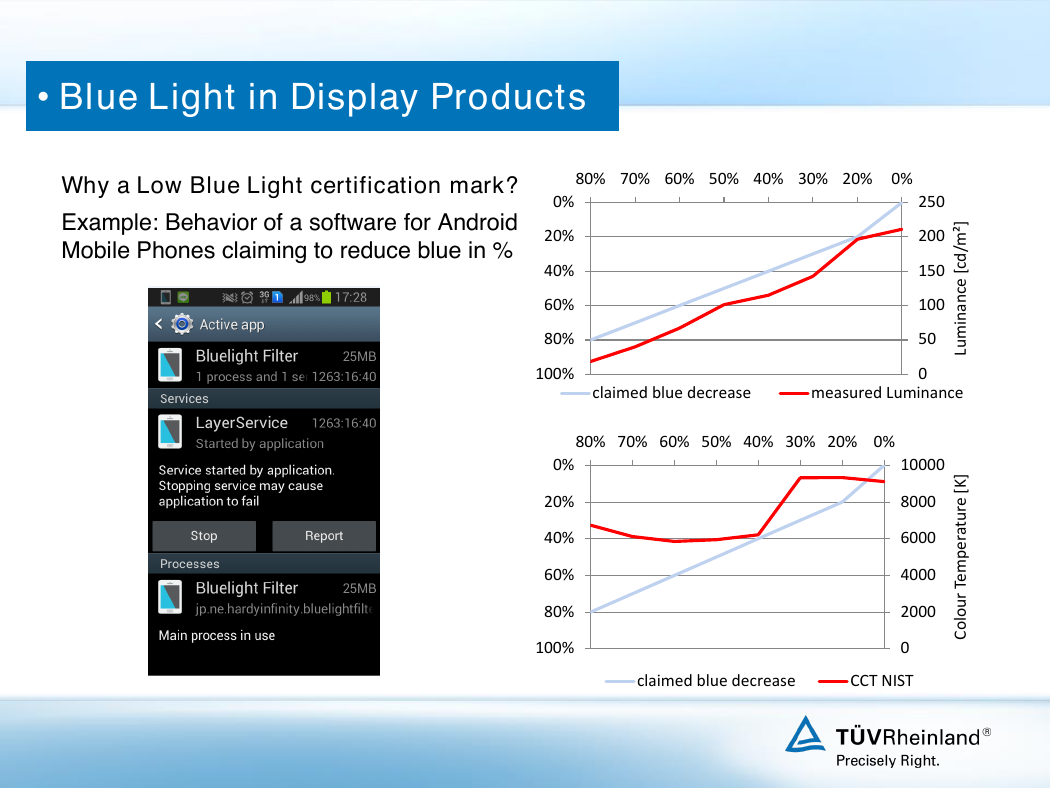
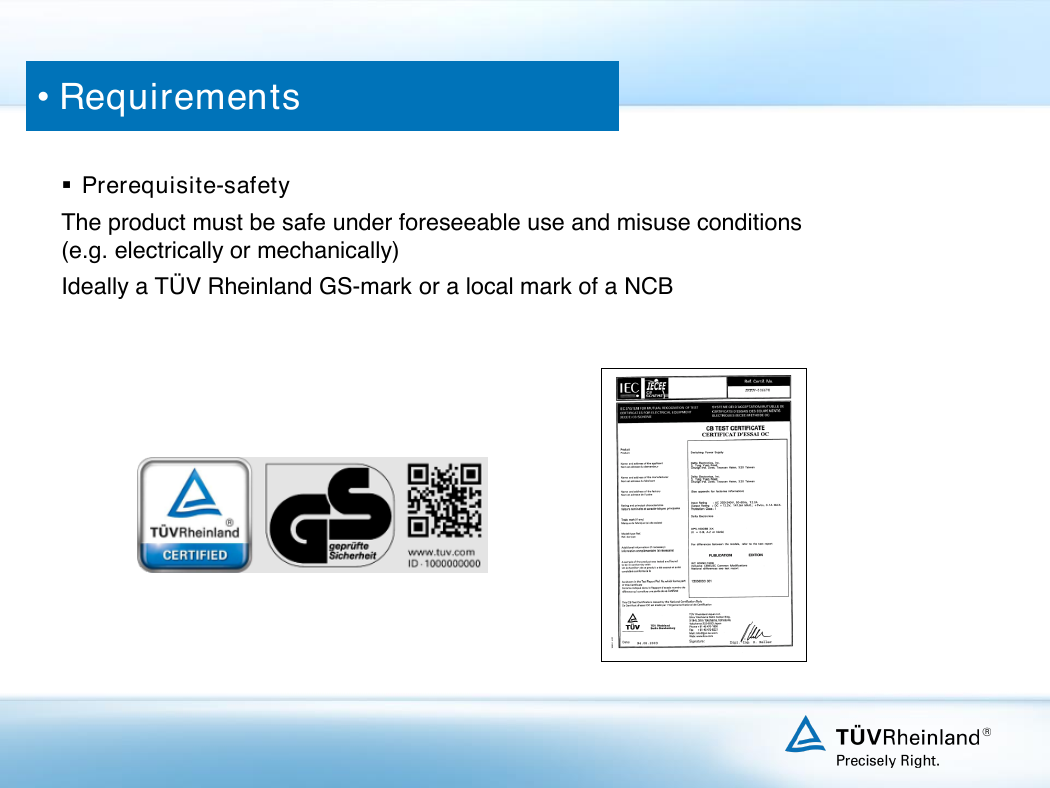

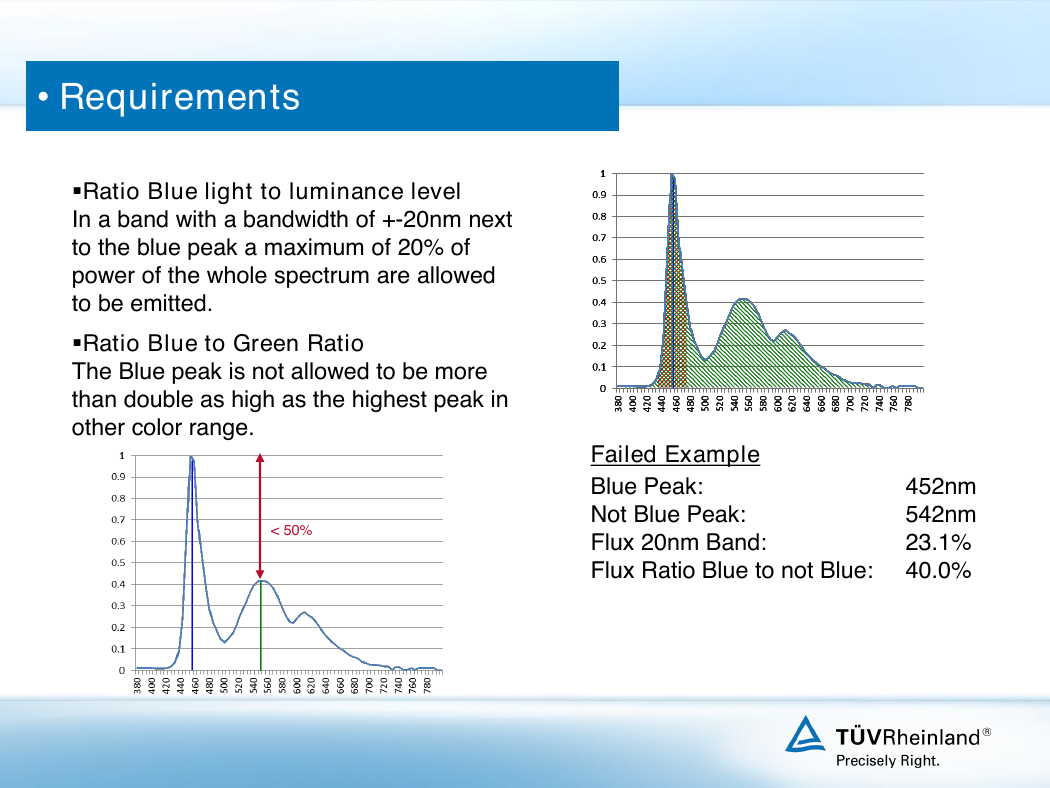
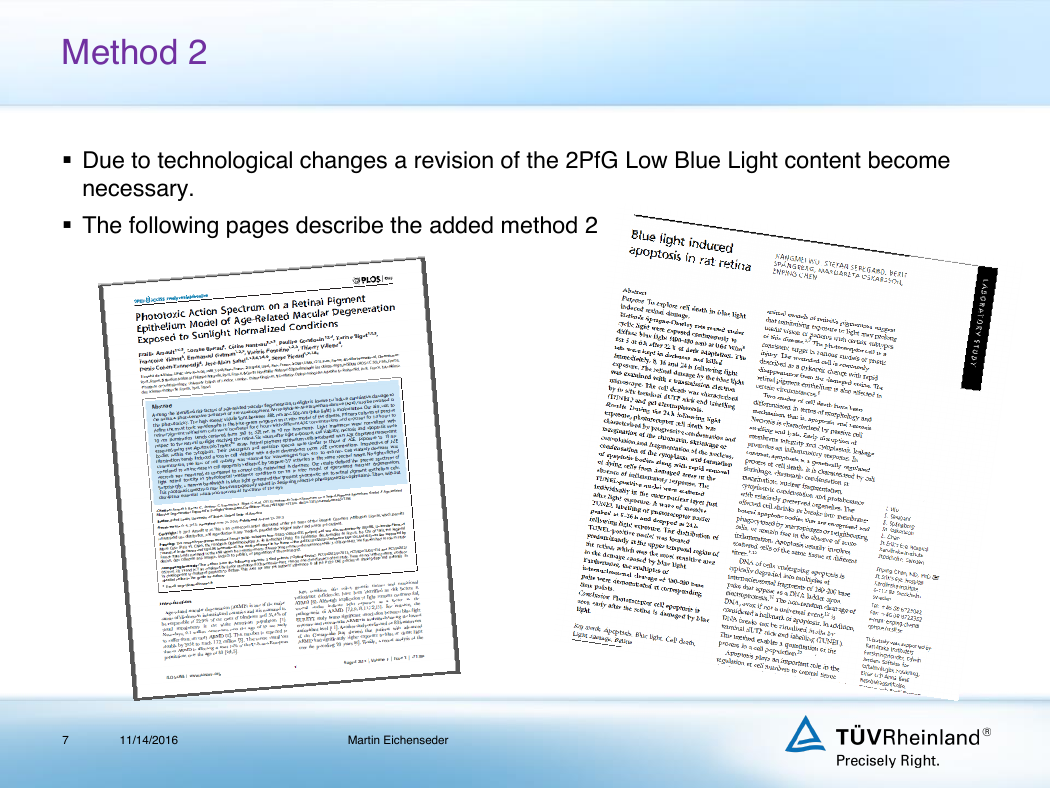
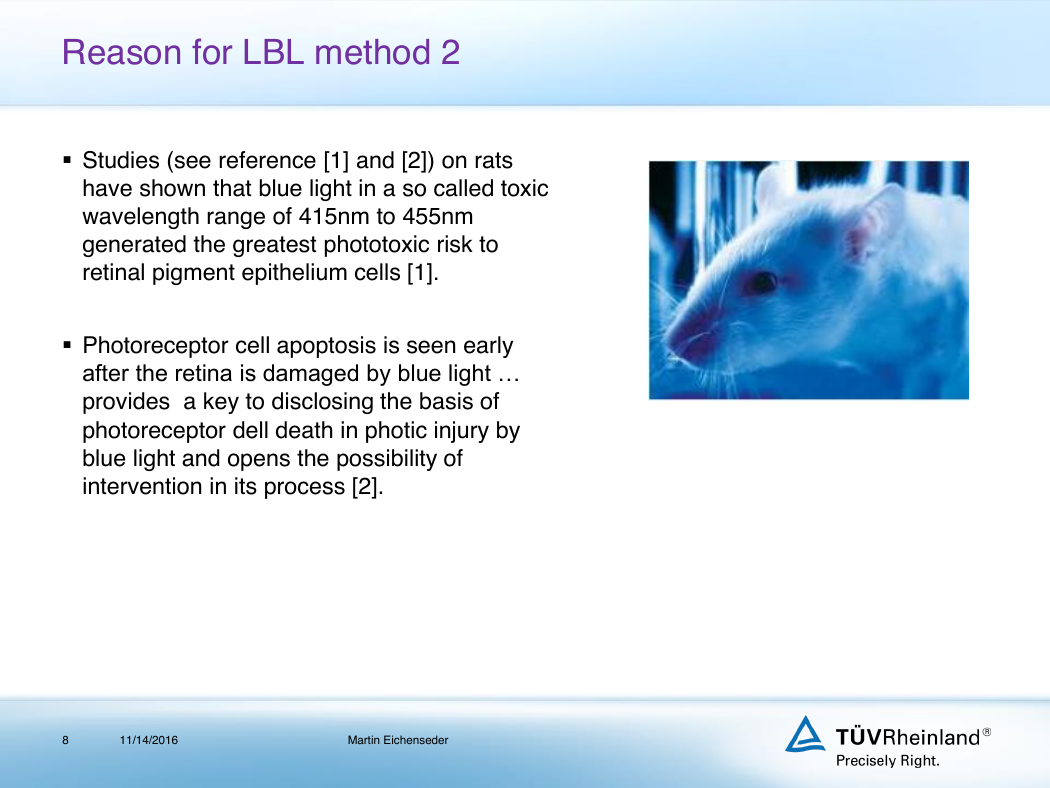








 2023年江西萍乡中考道德与法治真题及答案.doc
2023年江西萍乡中考道德与法治真题及答案.doc 2012年重庆南川中考生物真题及答案.doc
2012年重庆南川中考生物真题及答案.doc 2013年江西师范大学地理学综合及文艺理论基础考研真题.doc
2013年江西师范大学地理学综合及文艺理论基础考研真题.doc 2020年四川甘孜小升初语文真题及答案I卷.doc
2020年四川甘孜小升初语文真题及答案I卷.doc 2020年注册岩土工程师专业基础考试真题及答案.doc
2020年注册岩土工程师专业基础考试真题及答案.doc 2023-2024学年福建省厦门市九年级上学期数学月考试题及答案.doc
2023-2024学年福建省厦门市九年级上学期数学月考试题及答案.doc 2021-2022学年辽宁省沈阳市大东区九年级上学期语文期末试题及答案.doc
2021-2022学年辽宁省沈阳市大东区九年级上学期语文期末试题及答案.doc 2022-2023学年北京东城区初三第一学期物理期末试卷及答案.doc
2022-2023学年北京东城区初三第一学期物理期末试卷及答案.doc 2018上半年江西教师资格初中地理学科知识与教学能力真题及答案.doc
2018上半年江西教师资格初中地理学科知识与教学能力真题及答案.doc 2012年河北国家公务员申论考试真题及答案-省级.doc
2012年河北国家公务员申论考试真题及答案-省级.doc 2020-2021学年江苏省扬州市江都区邵樊片九年级上学期数学第一次质量检测试题及答案.doc
2020-2021学年江苏省扬州市江都区邵樊片九年级上学期数学第一次质量检测试题及答案.doc 2022下半年黑龙江教师资格证中学综合素质真题及答案.doc
2022下半年黑龙江教师资格证中学综合素质真题及答案.doc